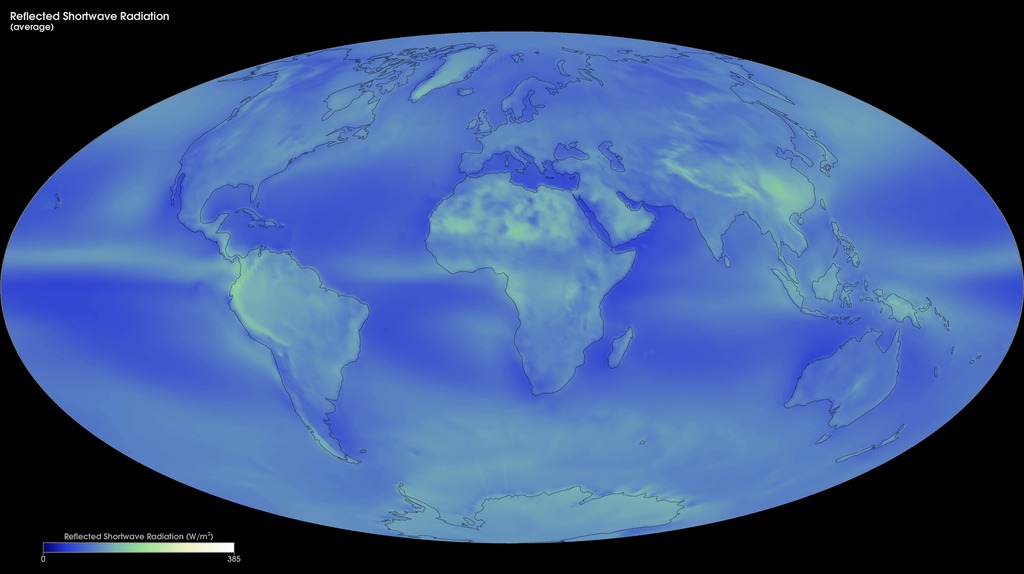CERES top of Atmosphere Fluxes
These maps show monthly top of atmosphere radiative fluxes from March 2000 to the present from the Energy Balanced and Filled (EBAF) data product. These data are produced by averaging observations collected by the Clouds and the Earth's Radiant Energy System (CERES) sensors on NASA's Aqua and Terra satellites, filling in gaps and constraining the fluxes to remove the inconsistency between average global net TOA flux and heat storage in the Earth-atmosphere system.
The top of atmosphere incoming solar radiation is affected by the Sun-Earth geometry.
The colors in these shortwave images show the amount of shortwave energy (in Watts per square meter) that was reflected by the Earth system. The brighter, whiter regions show where more sunlight is reflected, while green regions show intermediate values, and blue regions are lower values.
The colors in the longwave images show the amount of outgoing longwave radiation leaving Earth's atmosphere (in Watts per square meter). Bright yellow and orange indicate greater heat emission, purple and blue indicate intermediate emissions, and white shows little or no heat emission.
Adding the three preceeding variables gives net radiation. The colors in the net radiation images show the net radiation (in Watts per square meter) that was contained in the Earth system. The maps illustrate the fundamental imbalance between net radiation surpluses (red areas), where sunlight is direct, and net radiation deficits at higher latitudes (blue and green areas), where direct sunlight is seasonal.
For More Information
Credits
Please give credit for this item to:
NASA's Goddard Space Flight Center
-
Visualizer
Release date
This page was originally published on Wednesday, November 13, 2019.
This page was last updated on Monday, February 3, 2025 at 12:50 AM EST.
Datasets used
-
EBAF TOA Fluxes, Clouds [Terra and Aqua: CERES]
ID: 1060Observed net balanced top of atmosphere (TOA) fluxes
This dataset can be found at: https://ceres.larc.nasa.gov/products-info.php?product=EBAF
See all pages that use this dataset
Note: While we identify the data sets used on this page, we do not store any further details, nor the data sets themselves on our site.
